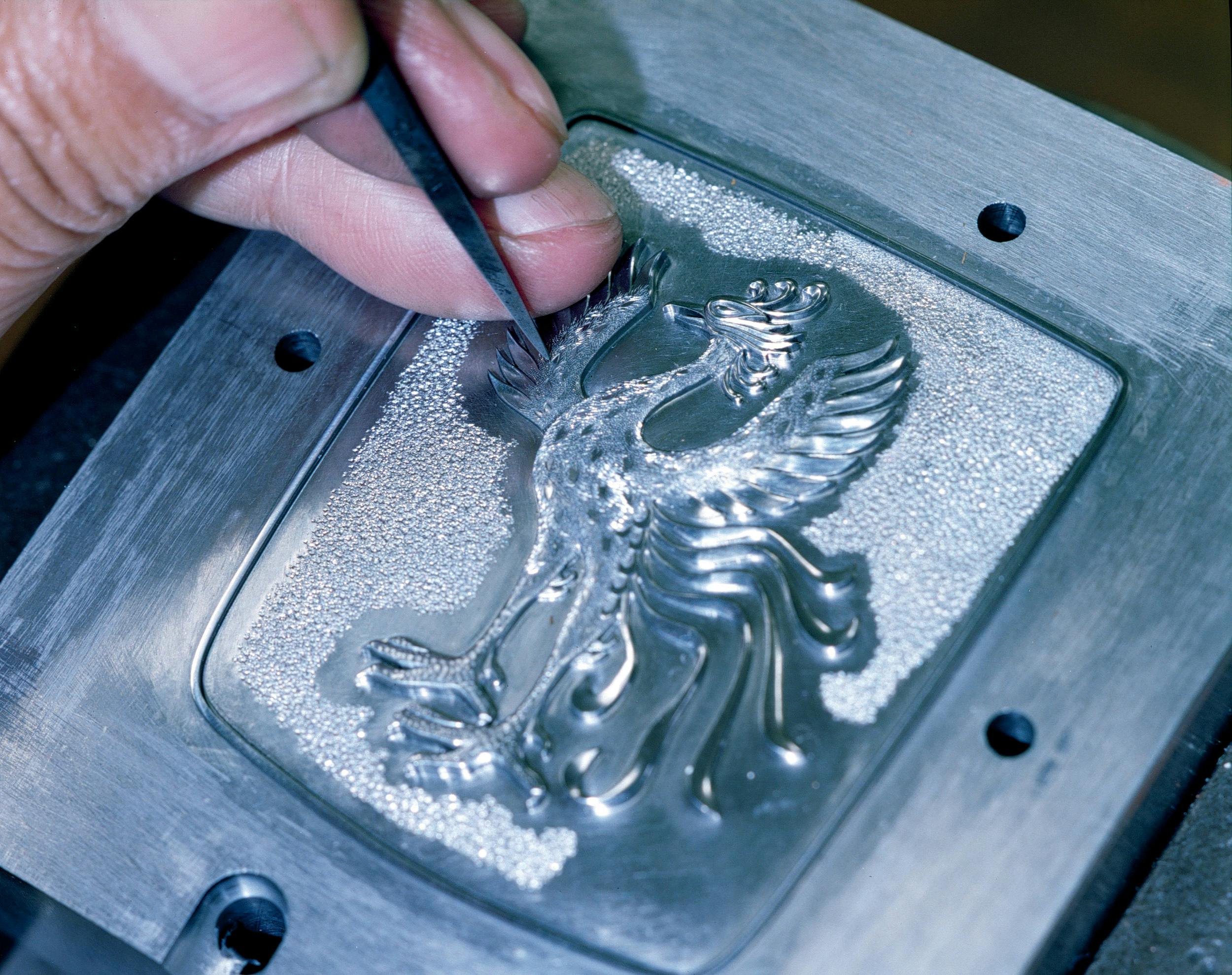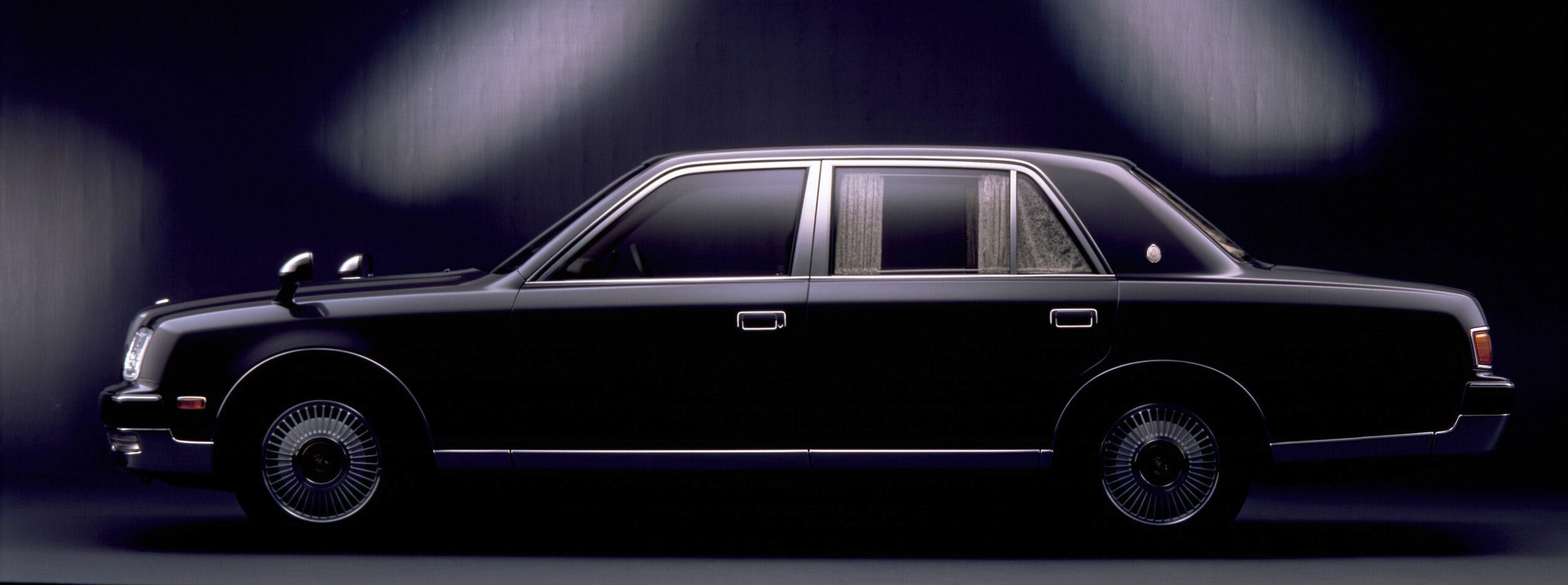Media | Articles
Japan’s only V-12–powered production car is a timeless classic
If you have not done so already, reading Sajeev Mehta’s dissection of the new Toyota Century SUV is well worth your time. One of the great benefits of having a trained transportation design expert on staff is seeing a heffalumpian shape receive a good skewering; we may instinctively find this new flagship crudely offensive, but Mehta neatly explains why we do so. However, let’s leave Toyota’s Bentayga moment aside, and focus our gaze instead on its Rolls-Royce era.
This magnificent machine is the V-12-powered second-generation Century, never officially sold in the U.S., but now a very tempting import under 25-year gray-market exceptions. It is the apogee of the breed from which Toyota is now sadly descending. Well, perhaps that’s a bit unfair; the current-generation Century limousine is still a pretty elegant machine.
But today’s Century has fewer cylinders, and in terms of the most luxurious machinery, that’s a bit like not having enough secret offshore bank accounts. Not only is the second-generation Century a machine of unimpeachable build quality and refined restraint, but it is also powered by the only production V-12 engine to ever come out of Japan. From the people who brought you stacks of champagne glasses balanced on the hood of a Lexus at 145 mph on a dyno, how about half again as many cylinders, and a dollop more class?
First, a primer on what the Century nameplate stands for. If you exclude the latest front-wheel-drive cankle, there have only been three Century models since 1967, a year chosen because it was a hundred years since Toyota founder Sakichi Toyoda’s birth. The first generation was slow off the line, not just in stately performance, but in being beaten to market by Nissan’s equally highbrow President and Prince Royal limousines. Imagine the loss of face at Toyota headquarters when it emerged that Nissan would provide the state vehicles for both the Japanese Prime Minister and the Imperial household of Japan.
Still, on the streets of Tokyo, the Century gained a certain reputation as the ultimate soft-power vehicle. Ordinary people got around using Japan’s exactingly punctual rail system, or by taking a Toyota Crown taxi. Executives in neatly tailored suits were ushered into the Century’s interior by white-gloved chauffeurs. The car barely changed in 30 years of production, but as Japan’s bubble economy expanded, its highly traditional aura created huge sales demand.
By the mid 1990s, Toyota found itself in a position similar to the time Mercedes-Benz changed the G-wagen to the G-Class. How do you update a vehicle where the entire appeal is its unchanging nature?
But then again, consider the position the Japanese automotive industry was in during that period. Mazda had its razor-sharp third-generation RX-7 twin-turbo and a win at Le Mans, Nissan was dominating both street and racetrack with the R32 Skyline GT-R, Subaru was at the height of its rallying mastery, and even the House of Mitsubishi was powerful and respected. Toyota first flexed its muscles with the overengineered fourth-generation Supra Twin Turbo. Then, in 1997, it spoke even more softly, and carried an even bigger stick.
The second-generation (G50) Century shares underpinnings with no other Toyota product. It looks similar to its first-gen ancestor on purpose but is a clean-sheet redesign, built to provide the quietest, smoothest, most serene chauffeured experience Toyota could manage. Even the badging is subtle, using phoenix symbols as you might find adorning the roof of a Japanese temple.
The headline is, of course, the 5.0-liter V-12, so let’s begin there. For an engine that would only be found in a single production car, and one developed almost entirely for the Japanese domestic market, Toyota splashed out the R&D dollars lavishly. The 1GZ-FE incorporates lessons learned from the architecture of the Lexus V-8, and also from the silky-smooth 3.0-liter inline-sixes found in the Supra and SC300, but it is its own beast entirely. Twin ECUs manage each bank of cylinders individually, each with its own fuel-injection systems, throttle bodies, and intake manifolds.
Peak output is modest at an official 276 horsepower, but as this figure conveniently fits within the “gentleman’s agreement” limit set by Japanese automakers at the time, it’s probably closer to 300 hp. Torque is 340 lb-ft at 4000 rpm, but the graph of the 1GZ-FE’s low end grunt is as flat as an Arizona mesa. As is typical of Toyota engineering at the time, the V-12 is also massively overengineered. In 2008, Japanese tuning house Top Secret took a fourth-generation Supra fitted with a twin-turbocharged Century V-12 to a speed of 220 mph at Italy’s Nardo Ring.
Because the 1GZ-FE was largely a JDM offering only, technical information on its development can be hard to pin down. However, poring over details from the 1997 Japanese Society of Automotive Engineers (JASE) lecture notes reveals some tasty details. Toyota’s engineers used Jaguar, Ferrari, and Mercedes-Benz V-12s as benchmarks, for instance, and even that of the Bugatti EB110. In comparison, the 1GZ-FE has a long stroke in order to maximize low- and mid-level torque over high specific output; Toyota doesn’t name names, but in provided charts, their 12 out-grunts every other manufacturer from 500 to 3500 rpm. Further, friction was reduced at every level in an effort to ensure Toyota’s V-12 would beat even less complex V-8s of a similar displacement in fuel economy. From the beginning, this was an engine targeted at effortless navigation of heavy traffic.
The combustion chamber is slightly angled for more stable flame front. Variable valve timing provides an ideal fuel-air mixture under light loads, and the dual channel injection and throttle body system evens out the mixture across all cylinders. Every effort was made to reduce engine vibration to nearly imperceptible levels.
And if the powertrain is a jewel, then the setting for it is craftsmanship of the highest quality. Fine wool upholstery is a Century trademark, less prone to squeaking on the move than leather and more breathable in a muggy Tokyo summer. The rear seats offer recline and massaging functions—common now, not so much then—and the electric latching doors shut with an authoritative click.
To be driven around in a V-12 Century is a transcendent experience. However, it’s really the chauffeur who’s having all the fun. From behind the wheel, a G50 provides all the gliding comfort of a golden age Lexus product, but with an even creamier torque delivery and ride. Air suspension is standard, and the Century’s ride comfort rival is less Rolls-Royce Silver Cloud and more actual cirrostratus.
“There’s nothing that says a practical car can’t be cool, and the Century is super-cool,” says collector Myron Vernis, co-author of definitive Japanese car collector book, A Quiet Greatness. He’s owned his V-12 Century for just over a year now and says he’s still discovering fun features. “I haven’t quite worked out the rear video system,” Vernis says, “but I’m pretty sure you can control the central GPS from the back seat.”
Vernis reports that his Century has been nearly as reliable as a contemporary Camry. One of the air suspension struts failed—a wear item—but ordering a replacement from Japan was relatively simple. V-12 Centurys were sold over a 20-year run, from 1997 to 2017, with just fewer than 10,000 made. Some consumables are shared with Lexus models, and there are still many Centurys working in livery service in Japan. A modern V-12–powered Jaguar, BMW, or even Mercedes can be a potentially financially terrifying prospect, but this is a Toyota. It’s like the world’s nicest Camry.
Toyota’s marketing slogan for the car sums things up nicely: “The Century is acquired through persistent work, the kind that is done in a plain but formal suit.” Let the pop stars and movie icons have their Maybachs and Rolls-Royces; a V-12 Century passes through traffic with quiet authority, not flash. That’s what makes it a timeless classic.
***
Marketplace
Buy and sell classics with confidence
Check out the Hagerty Media homepage so you don’t miss a single story, or better yet, bookmark it. To get our best stories delivered right to your inbox, subscribe to our newsletters.












































Ugly
I think ugly is slightly harsh, but “unremarkable” and “derivative of a decades-prior of GM styling” would be fair comments.
I have no doubt that it is well-engineered, outfitted with great materials executed superbly… but it is a letdown in the front end and rear treatments design-wise. The front fenders front edge has a very lux curve/drop to it, that for me completely clashes with the minivan headlights and 80s Skylark bumper. Put dual round headlights there and rework the grill/bumper I think that part could work very well. (single large round headlamps… you’ve made a Volvo).
You can import them into the UK. The new SUV looks nice .how ever rolls Royce you can go to a dealer but not Toyota to stingy to sell them in the UK